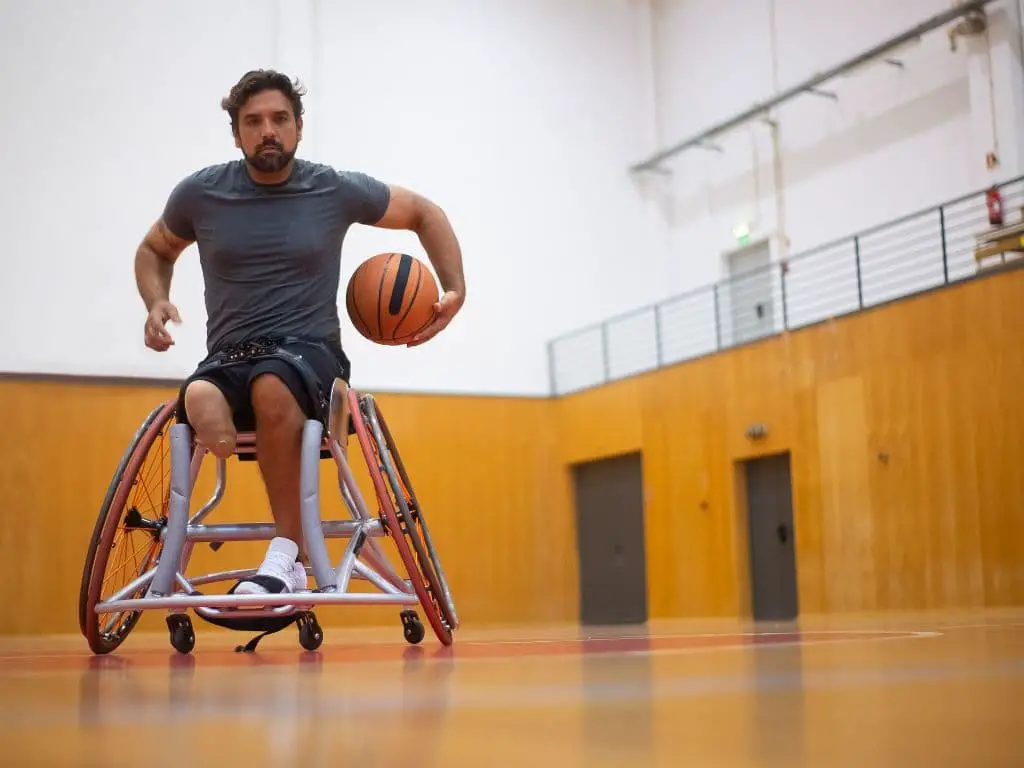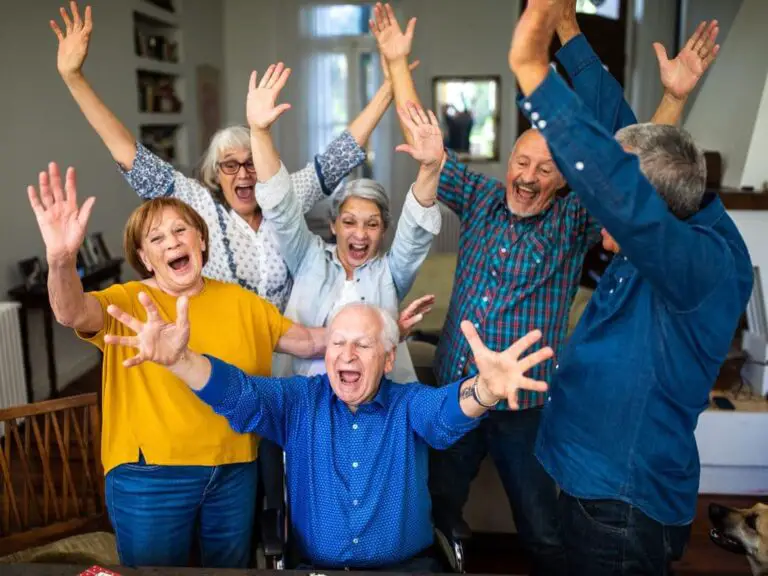Social Devaluation in Disability: Causes, Consequences, and Solutions
Why individuals with disability are often socially devalued? Individuals with disabilities can often be socially devalued due to entrenched societal norms and stigmas, which may lead to misunderstanding, prejudice, and discrimination towards them. Structural barriers within societies, like unequal access to opportunities or resources, can also contribute to devaluation, as they can create perceptions of dependence. Media representations of disability frequently reinforce stereotypes and negative attitudes, promoting a view of people with disabilities as less competent or less valuable than their able-bodied counterparts.

What Is Social Devaluation in Disability?
Social Devaluation in Disability refers to a sociological concept that involves a reduction in the perceived value or worth of individuals with disabilities due to prejudice, discrimination, and societal norms that diminish their roles or status within a community. This perception is perpetuated by existing stereotypes, biases, and misconceptions about disabilities which often result in discriminatory practices such as segregation, denial of opportunities, and exclusion from various societal activities.
Interactions between people with disabilities and society at large can often be shaped by the negative attitudes and beliefs people have about disability. When society views disability as a tragedy, individuals with disabilities are often not given the opportunities to contribute to society in meaningful ways. This devaluation impacts not just their personal lives, but also public policy, medical practices, and how the community engages with them.
This conception of social devaluation is associated with the Social Model of Disability which emphasizes that disability is not an attribute of an individual, but rather a complex collection of conditions, many of which are created by the social environment. Thus, social devaluation is not an inevitable outcome of having a disability, but a product of societal structures and attitudes.
Social devaluation theory argues for the need to challenge and change these societal norms and values. This can involve promoting inclusion, empowerment, equality and respect for diversity. This theory incorporates the overarching goal of upholding human rights, which includes the right to be respected, the right to participate in society, and the right to equal opportunities for all, irrespective of disability.
It is a strategy towards achieving social change, overcoming the barriers posed by disability discrimination, and promoting the inclusion and full participation of people with disabilities in all aspects of community life. It calls for society to reassess its attitudes and behaviour towards disabled people, and to ensure that services and opportunities are adapted to meet their needs.
What Are the Causes of Social Devaluation of People With Disabilities?
The social devaluation of people with disabilities is a complex issue that stems from a variety of social, cultural, and systemic factors. Historically, societal attitudes towards disability have separated and stigmatized those with disabilities, often viewing disability as a personal tragedy or problem. Such beliefs tend to perpetuate marginalization and certain assumptions about what individuals with disabilities are capable of.
Media and advertising also play a significant role in the social devaluation of people with disabilities. The representation of individuals with disabilities is often deficient or stereotypical, leading to a lack of understanding and empathy from the wider population. This representation can significantly contribute to shaping public perception and attitudes, which in turn affects how people with disabilities are treated in society.
The lack of accommodations and accessibility for people with disabilities in various aspects of life, such as education, transportation, employment, and healthcare, is another major cause of social devaluation. For instance, the absence of assistive technologies or the unwillingness to accommodate people with disabilities can limit their participation and inclusion in society. This reduction in societal participation further perpetuates the devaluation and marginalization of people with disabilities.
The absence of inclusion and acceptance for people with disabilities in society is a significant cause for their social devaluation. Inclusive practices and acceptance of diversity are fundamental factors in changing societal attitudes towards people with disabilities. Without these, people with disabilities are often excluded from social and community activities, leading to isolation, discrimination, and, consequently, devaluation.
1. Historical Social Attitudes
Historical social attitudes have caused the social devaluation of people with disabilities stemming from deeply ingrained stigmas, misconceptions, ignorance and fear. Societies, particularly in earlier time periods, often lacked the understanding or willingness to accommodate individuals with disabilities, leading to their marginalization and exclusion from mainstream aspects of life such as education, employment, and social activities.
Further, societies often perceived disabilities as signs of inferiority or as conditions needing to ‘be fixed’, contributing to the vulnerability, discrimination, and seclusion experienced by disabled persons. This has been significantly challenged and changed in recent decades with more inclusive policies, societal awareness and advocacy work, though remnants of these historical attitudes persist.
2. Poor Representation in Media and Advertising
Poor representation of people with disabilities in media and advertising has perpetuated stereotypes, misunderstood and marginalized this segment of the population, thus contributing to their social devaluation.
Lack of Accommodations and AccessibilityRather than portraying their authentic experiences, abilities and contributions, media often either victimizes or fetishizes individuals with disabilities. This skewed representation promotes a biased societal perception and encourages misconceptions about people with disabilities’ worth and capabilities.
3. Lack of Accommodations and Accessibility
The lack of accommodations and accessibility for people with disabilities has historically led to their social devaluation. This is primarily due to societal barriers that limit their ability to participate fully in community life such as education, employment, and social activities.
This exclusion can often lead to isolation and marginalization, reinforcing harmful stereotypes and contributing to perceptions of disabled people as burdens or less valuable members of society. Such devaluation impinges on their rights, dignity, and overall quality of life.
4. Absence of Inclusion and Acceptance
The absence of inclusion and acceptance in society has led to the social devaluation of people with disabilities by reinforcing stereotypes, creating barriers to participation, and perpetuating a cycle of discrimination and segregation. This marginalization often results in fewer opportunities for individuals with disabilities, in areas ranging from education and employment to social and civic engagement.
Consequently, the exclusion and negative societal perception reduce their quality of life, reinforcing the social devaluation they face. This emphasizes the importance of promoting inclusivity and acceptance to challenge the harmful norms and prejudices and enable people with disabilities to achieve their full potential.
What Are the Consequences of Social Devaluation in Disability?
Social devaluation in disability refers to the negative stereotyping and devaluing of individuals with disabilities. This can have numerous consequences:
Discrimination and Stigma
Social devaluation can lead to discrimination and stigma against individuals with disabilities, impacting nearly every aspect of their life from education and employment to socialization and interpersonal relationships.
Lower Quality of Life
It can result in a lower quality of life for those coping with disabilities, mainly due to reduced opportunities in education, employment, housing, healthcare, and recreational activities.
Exclusion and Social Isolation
People with disabilities may be excluded or marginalized from various social activities, leading to a sense of isolation and loneliness.
Negative Self-perception
The internalization of social devaluation can result in negative self-perce ption and low self-esteem, often leading to depression, anxiety, and other mental health issues.
Barriers in Accessibility
It can further contribute to the creation and maintenance of barriers in accessibility, from public Transportation to information and service access.
Violation of Human Rights
Social devaluation is a violation of the fundamental human rights of people with disabilities, as outlined by the United Nations Convention on the Rights of Persons with Disabilities.
Inadequate Policy and Legislation
It can result in disregarding the need for comprehensive policies and legislations aiming at inclusion, accessibility, and equal opportunities for people with disabilities.
In response to these challenges, various social movements, advocacy groups, and legislative efforts worldwide aim to combat social devaluation and promote improved societal inclusion and equal opportunity for individuals with disabilities.
What Are the Solutions to Social Devaluation in Disability?
The solutions to social devaluation in disability involve a multi-layered approach focused on enhancing the empowerment, inclusion, rights, and value of disabled individuals in society.
To implement these solutions, it requires the effort and cooperation of individuals, communities, institutions, and governments.
Awareness and Education
Increasing public awareness about disabilities and the challenges faced by individuals with disabilities. Education can help break stereotypes, combat prejudice, and promote a more nuanced and compassionate view of disability.
Advocacy and Legislation
Advocacy efforts aim to fight discrimination and promote the rights of individuals with disabilities. Advocacy can lead to improved legislation to ensure equal rights and opportunities for all individuals, regardless of disability. This includes laws related to public accommodations, employment, education, and health care.
Social Inclusion Programs
Social inclusion programs are aimed at integrating individuals with disabilities into mainstream society in meaningful ways. This can take the form of inclusive education, community living, inclusive employment opportunities, and access to mainstream services.
Empowerment and Autonomy
Providing support to individuals with disabilities to promote their autonomy and empowerment. This involves emphasizing their capabilities, providing them with necessary aids, and facilitating their decision-making capacity in personal and social matters.
Accessible Infrastructure
Building accessible infrastructure, including buildings, transportation, and digital platforms, is critical to ensure equal access for people with disabilities. Accessibility in physical and virtual environments minimizes barriers and supports inclusion.
Disability Representation
Increasing representation of disabled individuals in media, politics, businesses, and other public roles. This helps to challenge negative stereotypes, showcase the abilities and potential of disabled individuals, and inspire societal changes.
Psychological Support
Providing mental health support to individuals with disabilities to deal with the adverse effects of social devaluation is essential. This involves counseling, therapy, and accessible mental health services.
By embracing these solutions, society can progress towards a more inclusive paradigm, where individuals with disabilities are valued and included equally in all spheres of life.
Frequently Asked Questions
-
Why individuals with disability are often socially devalued?
They include the default attitudes of mainstream society, policies that are not inclusive, institutional barriers (e.g., a building without a wheelchair ramp) and institutional barriers (absence policies for disabled employees to enable them perform their jobs correctly and efficiently).
-
Which model of disability is the best?
Biomedical models of health are the dominant ones in western countries. They focus on biological aspects of health and health. A medical model for disability is included in the biomedical health model.
-
When did independent living movement start?
Independent Living (IL), was born in 1970 when Ed Roberts, a Berkeley Center for Independent Living founder in California, and other people with disabilities were studying at the University of California at Berkeley.
-
What are the three 3 main views of disability?
The new model, as shown in Figure 3-3 shows, can be divided into three components: the person (disability), the environment and the interaction between the person and the environment. “3 MODELS FOR DISABILITY and REHABILITATION” is a suggested Citation. Institute of Medicine. 1997.
-
What was the original goal of the independent living Centers?
Disability activists led by Ed Roberts in Berkeley, California, founded the first Center for Independent Living. The Centers are managed and controlled entirely by people with disabilities. They offer peer support as well as role models.
-
What is an example of medical model of disability?
People are influenced by the medical model for disability. Statements like “he cannot read this newspaper because he is blind” can be an example. This medical model has influenced the structure and development of legislation. It also reflects in the attitudes of people and the negative consequences.
-
How much can you earn on supported living payment?
Personal earnings (e.g. you work) can make you up to $180 per week, prior to tax. Your payment will not be affected. Other payments, such as the Accommodation Supplement, could also be affected.
-
What is meant by supported living?
With their own agreement as a landlord, supported living allows them to have their home and security. You can choose to live with others or alone. There are many options for housing, including self-contained apartments, homes, bungalows, and custom solutions.
-
Who qualifies for assisted living in Michigan?
Senior citizens 65 and older. A single resident’s monthly income must not exceed $1.012 in 2018. Assets must not exceed $2,000 and must not exceed $1,000. The monthly income of married residents cannot exceed $1,372 in 2018, and assets should not exceed $2,000 If you are unable to afford the nursing home care, but would prefer assisted living,
-
Who said nothing about us without us?
James Charlton recounts that the term was first used by South African disability activists Michael Masutha, and William Rowland. They had also heard it used at an international conference on disability rights by another East European activist.
-
What is the cost of living payment?
For eligible concession card holders and payment recipients, the Cost of Living Payment will be a $250 one-time payment. Even if a person is eligible in several ways, the Cost of Living Payment can only be paid one time. If both members of the couple are eligible, each member will be paid.
-
What are the disadvantages of the social model of disability?
One of the major limitations to the social model, it is claimed, is that it further incapacitates people already handicapped by failing to properly identify the disability. (Shakespeare 2006).
-
Does Medicaid pay for caregivers in the home Michigan?
Program participants have the option to choose their caregivers based on Medicaid’s Cash and Counseling system. The care provided by family members and friends (except parents or spouses) may be covered at no cost to them.
-
What is the difference between social and medical model disability?
According to the social model, disability can be caused by society’s organization. According to the medical model, people can be disabled because of their differences or impairments.
-
What is the asset limit for Medicaid in Michigan?
You must not have more than $2,000 to be eligible for Medicaid in Michigan. Resources include assets such as money or property. The limit does not apply to property. Michigan exempts one vehicle and exempts household goods.






